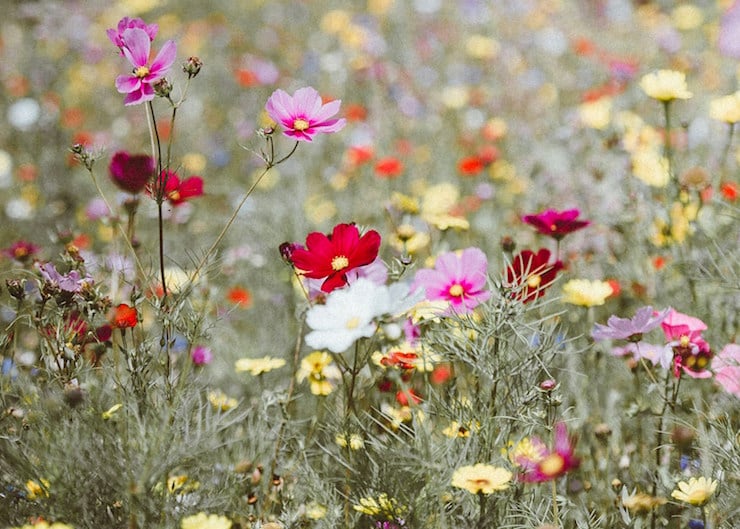I was raised on nursery rhymes, and I loved them, even if they weren’t always perfectly nice. One such rhyme: Mary, Mary, Quite Contrary.
Do you recall it?
Mary, Mary, quite contrary,
How does your garden grow?
With silver bells, and cockle shells,
And pretty maids all in a row.
The earliest rendition, according to Wikipedia, was published in 1744 in Tom Thumb’s Pretty Song Book, the oldest printed collection of English nursery rhymes.
While the rhyme supposedly makes reference to either religious concerns or the royals and their troubles, I grew up thinking it was about a little girl who simply knew what she wanted (so people called her contrary). This little girl had a garden, and it was a delightful one. Maybe people were jealous of it; that was what the reverberations of the rhyme seemed to suggest. What I loved most? Her garden was unconventional, even musical.
The other day I was rereading one of Dheepa Maturi’s Poet Laura posts, and this caught my eye:
“But Tweetspeak is not just any space. It’s a garden, one that’s been cultivated with care and planted with varied seeds by attentive stewards. It’s a place of beauty and civility and kindness. I’m so thankful for the opportunity I’ve been given—indeed, entrusted with—to tend a corner of that space for a short time.”
Tweetspeak as a garden. How lovely.
If Tweetspeak is a garden, then poems are its silver bells. Shining, clear-ringing, calling. Not just the poems that we share with you, but also the poems you write and share with us.
Try It: How Does Your Garden Grow Prompt
In the rhyme above, Mary’s garden grows with silver bells, cockle shells, and pretty maids. Pretend that your poem is a garden. How does it grow? What will you plant in it? Share it in the comments. We’d love to read.
Sample Poem
Poem Garden
I count your little rows
and find what I did not expect
to find
for so ruly
a rhyme.
Questions
at the edges
wild hedges
pine cones, river shells,
a piece of driftwood
so heavy, though it looked so
light (I carried it anyway
from the disappearing shore)
blueberries
wine berries
currant berries
that invite
(take us; if you don’t,
who will?)
a touch of contrary
if we’re talking
convention
and
despite the changing
weather
violets everywhere
everywhere.
Photo by Annie Spratt, Creative Commons, via Unsplash. Post by L.L. Barkat.
- Poetry Prompt: In the Wild Secret Place - January 6, 2025
- Journeys: What We Hold in Common - November 4, 2024
- Poetry Prompt: My Poem is an Oasis - August 26, 2024

Katie Spivey Brewster says
Tweetspeak Garden Poem (from L.L. and Dheepa)
Cultivated with care
planted with variety
tended by thoughtful stewards
A place of beauty
of kindness and civility
Shining, ringing, calling.
Come grow and learn
receive and give
share delight!
L.L. Barkat says
Katie, this is so sweet. Thank you 🙂
Bethany R. says
“Shining, ringing, calling.
Come grow and learn
receive and give
share delight!”
Aww…yes! Great tribute to the spirit of TSP and its community! Happy you’re here, Katie!
Bethany says
L.L., this is such a beautiful garden poem. So glad you shared it with us.
“Questions
at the edges
wild hedges”
And that driftwood…
Oh, and I love the violets everywhere!
L.L. Barkat says
It’s always so fun to see what phrases stand out for someone. And to hear them excerpted and set up newly.
Thank you, Bethany. Why can I see you painting “violets everywhere”? 🙂
bethany says
<3 Aww…makes me happy that you thought of that! 🙂
Right now, I'm playing with some words for this prompt from a magazine page. We'll see if something becomes of it. Just for fun, I'll try and send a photo of play & process' early stages…
Bethany Rohde says
my garden
a mix of discovery
and history that never went away
scent of hyacinth and sweet corn
handful of early daffodils
thickly-packed dahlias
wisteria on the old forgotten house
hybrids
of other gardeners’ flower heads
(in a full spectrum of pastels)
and the bulb of
Maybe
the original wildflower
——-
I took the words, and parts of words, for this freestyle found poem from one page of text:
Better Homes & Gardens magazine, April 2024 issue, pg. 76. The article was written by Stephen Orr, and is called, “The Forgotten Bulb” (referring to hyacinths–I want to buy more of them now.).
There are several more lines I’ve made from this text that don’t quite flow here, but could be fun as maybe single lines on separate papers. If I make a colorful layout of this, or other lines, on paper, I can try and share. 🙂
Bethany Rohde says
Revising, and here’s why. I wanted to make the third stanza a bit more clear and less clunky. I thought about losing the line about the spectrum of pastels. But. That is one of the first phrases (along with the original wildflower) from the article that sang out most directly to me. Multicolored pastels is my favorite color. 😉 So I’m putting it as the title/first line.
—
A full spectrum of pastels
my garden
a mix of discovery
and history that never went away
scent of hyacinth and sweet corn
a handful of early daffodils
thickly-packed dahlias
wisteria on the old forgotten house
hybrids of other gardeners’ tulips
and the odd-looking bulb of
Maybe
that original wildflower